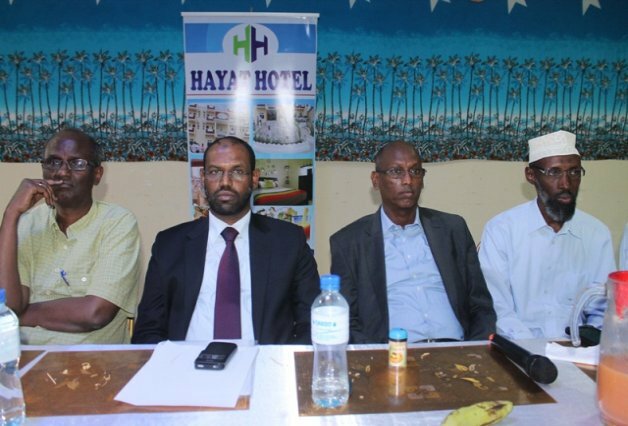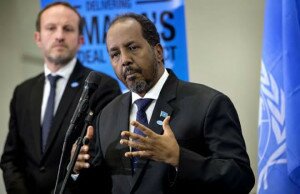Insecurity rises in Dadaab as Kenya ’rounds up’ urban Somali refugees
 People living in the Dadaab refugee complex are nervous over Kenya’s plans to relocate Somalis there from urban areas
People living in the Dadaab refugee complex are nervous over Kenya’s plans to relocate Somalis there from urban areas
Bishara Mohamed cradles her six-month-old son in a hospital in Dagahaley, one of five camps that make up the enormous Dadaab refugee complex in north-eastern Kenya.
Abdirizak has difficulty breathing, and a fever. These ailments are being treated. But the Somali infant has been born into the world’s biggest refugee camp, a place of great need, limited freedom and, increasingly, fear as armed gangs tighten their grip on a vulnerable population.
“Living conditions are deteriorating. Before, there was much peace. Now there is a lot of insecurity,” says Mohamed, who has been in Dadaab since 1992.
Aid officials and residents say Dadaab is becoming more dangerous as bandits kill, rape and steal, and Islamic militants target civilians and Kenyan security forces with bombs and shootings. About 95% of the 448,000 people living here are from Somalia, and some have been in this limbo land for 20 years.
As a fragile peace takes hold across the nearby border in Somalia, where African Union forces have routed the Islamic militants of al-Shabaab from many of their strongholds, Kenyan authorities are increasingly talking about the need for refugees to go home.
In December, Kenya’s department for refugee affairs said it wanted all Somali refugees living in urban centres to move to Dadaab, citing a threat to national security following grenade attacks in the predominantly Somali neighbourhood of Eastleigh in Nairobi, and in northern Kenya.
Aid organisations and human rights groups criticised the declaration as a breach of refugees’ rights and said an influx of up to 55,000 arrivals could make the situation at the complex even worse.
However, the relocation plans seem to be taking shape – Human Rights Watch (HRW) said this week that on 16 January “the ministry of provincial administration and internal security wrote to the ministry of special programmes saying the first phase of ’rounding up’ refugees would ‘target’ 18,000 people and start on 21 January. The letter said they would be taken to Nairobi’s Thika municipal stadium, which would act as a ‘holding ground’ pending transfer to the camps.”
On Wednesday, there was news of a temporary respite for fearful refugees in Nairobi, who rights groups say have been increasingly threatened and harassed by security forces since the December directive. The Kenyan high court granted a temporary order prohibiting the government from implementing its plans in a case brought by Kituo Cha Sheria, an advocacy group for poor and marginalised people. The case is due back in court on 4 February.
Dominik Bartsch, head of operations in Dadaab for the UN refugee agency (UNHCR), said he had little information on what the Kenyan government intended to do. “To the best of my knowledge, it hasn’t reached the level where specific plans or projections have been made in terms of how many people will arrive in Dadaab,” he said on Monday.
HRW said the proposed relocation would unlawfully reduce refugees’ access to food, clothing, housing, healthcare and education. “This plan would ride roughshod over a range of refugees’ fundamental rights, and enforcing it could well precipitate the very insecurity Kenya says it’s trying to prevent,” said Gerry Simpson, a senior researcher for HRW.
For many refugees, Dadaab is the only home they can remember. While many express a desire to return to Somalia eventually, they are waiting for peace to be firmly established in a country that has swung between war and short periods of relative stability for decades.
Ahmed Noor Hassan, 25, a youth leader in Dagahaley, has been in the camp since he was four. He says things are worse in the camps now than ever before. “There is the fear of the unknown,” he says. “There are normal bandits, who take your money and phone but they will not take your soul or your life. There are others, who have different ideologies and want to kill everyone. It’s terrible … I would be willing to go back [to Somalia] if there was total peace. It’s like an open prison here. No one wants to live in an open prison.”
Aid officials say around 100 refugees leave every week – but it is not clear if they are going for good. Bartsch says refugees have always moved back and forth to Somalia, with some going to check on their farms, to trade or to see family before returning to Dadaab.
However, he says a few families have recently cited security concerns as a reason to return for good. “They are saying it is a combination of the pressure here in Dadaab but it is also what we know about the situation back home. I don’t think we have any evidence to confirm that it is insecurity that is forcing people out,” he says.
Ifo 2 camp, which was opened in July 2011 to cater for people fleeing famine in Somalia, is one of the most dangerous areas, and Bartsch says there have been several gang rapes connected with robberies. “Our information is that these are bandits who live in the area who regularly go into the camps at night, robbing refugees,” he says, adding that Kenyan police have arrested some suspects and increased night patrols.
At the Médecins sans Frontières hospital in Dagahaley, field officer Abubaker Mohamed says although the situation has stabilised since the famine, there is no spare capacity. “The services are strained. If you add more people, you will lack basic services,” he says as he walks around the 200-bed hospital.
Mohamed Bashir Sheik, 25, a Somali journalist who lives in Hagadera camp, says he recently met several families who had arrived late last year at Ifo 2 and were heading back to Somalia because of the insecurity. “They are going back because they didn’t get what they were expecting,” he says. “If people are killed and raped in the camps, they cannot stay.”
Source:- Guardian
Comments
comments
 Calendar
Calendar






































